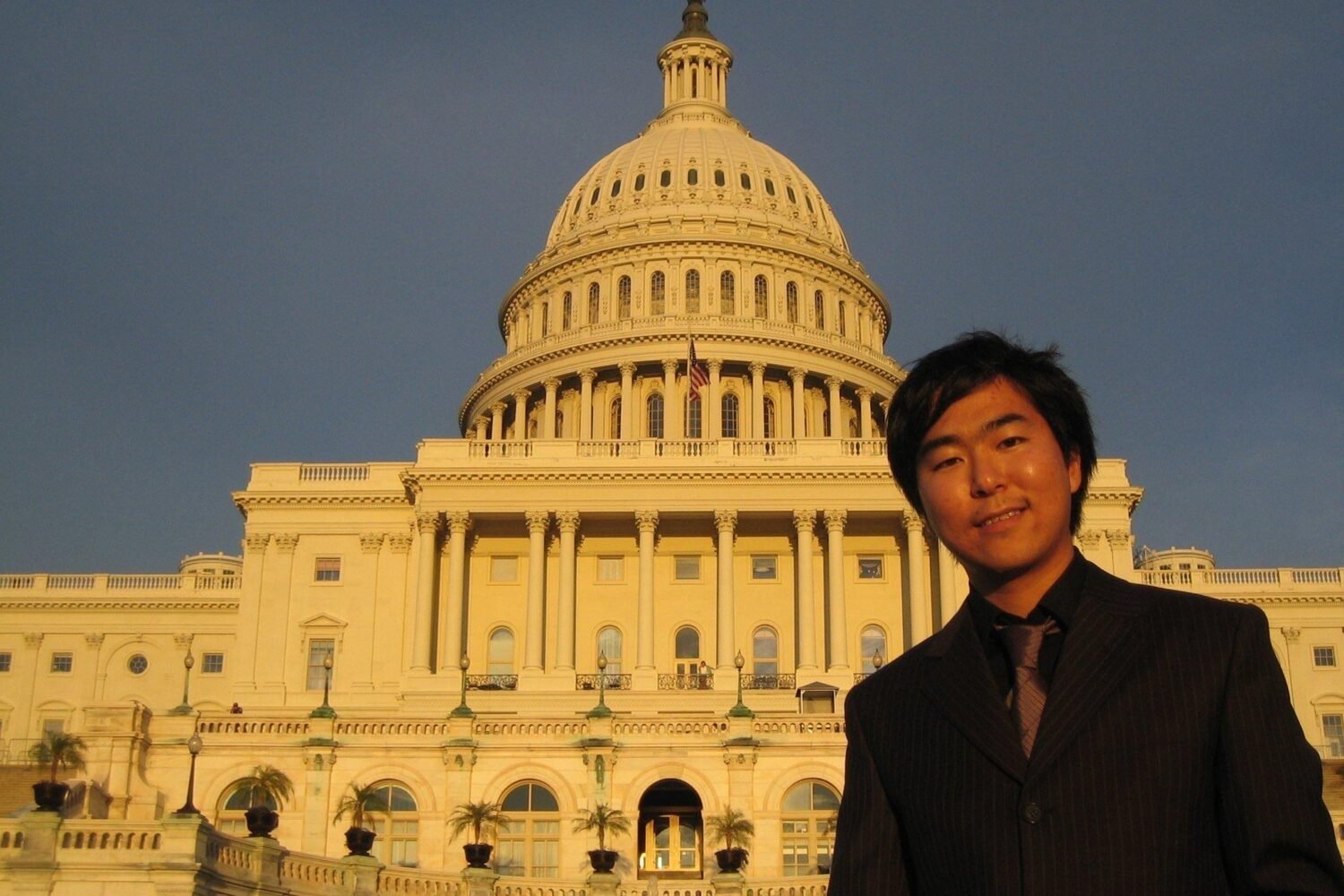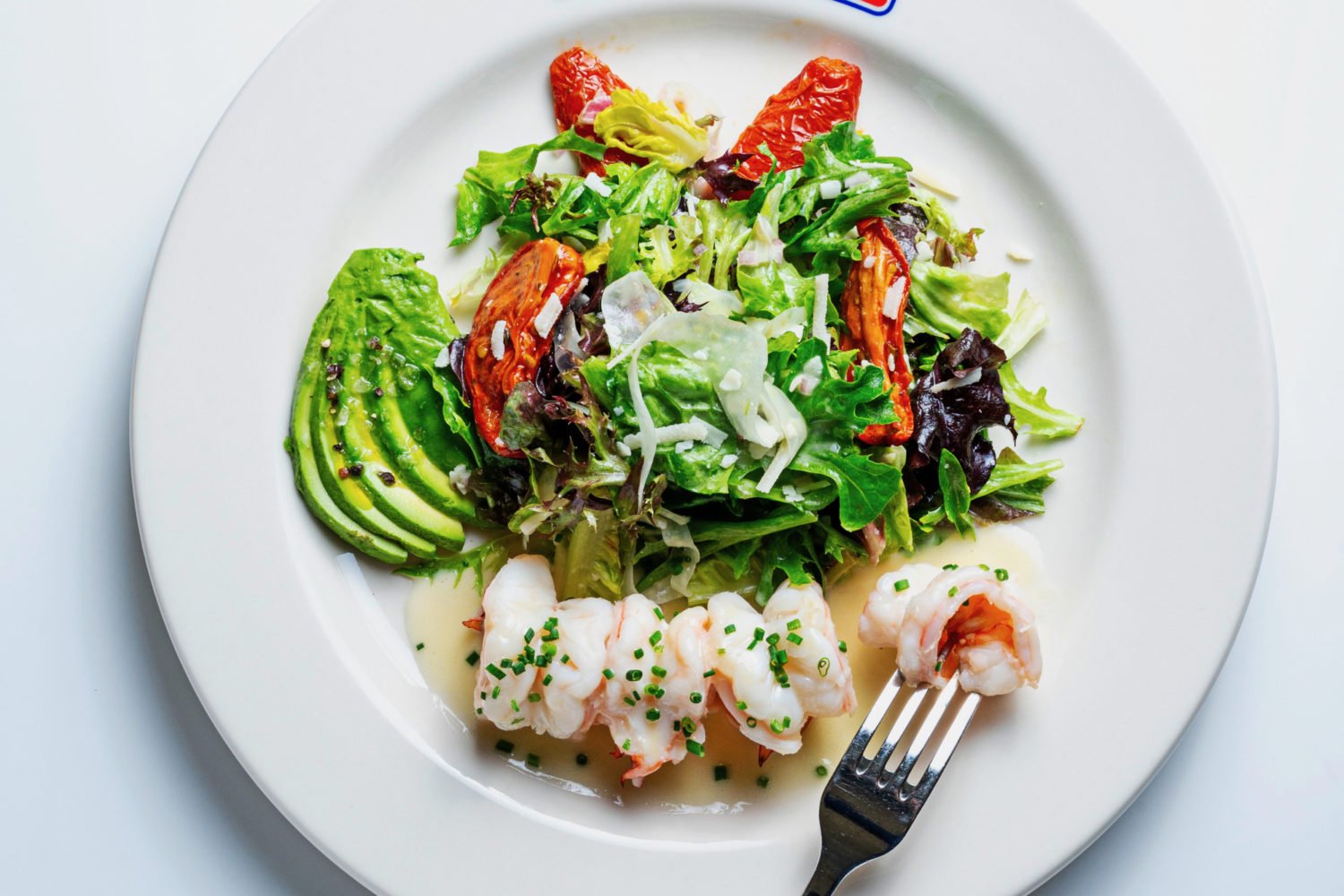How does a package like our 100 Very Best Restaurants list get made? What went into the decision to name Anju Washington’s #1 restaurant? Washingtonian editor Michael Schaffer interviewed lead critic Ann Limpert (over Slack!) to find out.
Michael Schaffer: You picked a moderately-priced Korean restaurant as Washington’s very best restaurant. That ranking is usually held by places like Komi or Minibar, restaurants where you have to claw for reservations and pay half your mortgage for a meal. What makes Anju so good?
Ann Limpert: You know, it’s pretty surprising: I was just looking back at all the #1s since we started ranking the list (2007) and every single top slot has gone to a tasting menu restaurant with the exception of Fiola Mare (which, uh, has a $60 ravioli dish). So yeah, Anju is probably going to surprise for some readers.
What made it stand out? Foremost, the food. I eat out many, many times a week. I often get sick of, well, eating. But every time I visited Anju I’d get home, and I’d be brushing my teeth and I’d think. Did I bring home leftovers? When can I get back there? That NEVER happens.
For a region that has no shortage of Korean restaurants (in Annandale and other parts of the suburbs), Anju is pushing the boundaries of the cuisine in really interesting ways. Co-owner Danny Lee’s mom is there guarding centuries-old fermentation traditions. Co-chefs Scott Drewno, Lee, and Angel Barreto bring a boatload of creativity. The result is pretty electric.
And! It’s really affordable. Not why we chose it but a nice bonus.
MS: You also write in your review that no other restaurant gave you as much joy in 2019. Is that the standard, though? Joy?
AL: That’s part of it. Excitement, pleasure, for sure. Critiquing restaurants, when you come down to it, is subjective and personal, so those aspects figure heavily. There are plenty of other questions we ask ourselves though
MS: Sometimes a plate of tater tots can bring more joy than anything else you can think of. But you don’t go around giving culinary awards to the Ore-Ida company.
AL: Well, no. This is slightly embarrassing to admit but one of the most pleasurable parts of my week is dipping the crust of a slice of Mellow Mushroom pepperoni into blue cheese dressing. Is Mellow Mushroom on any of our lists? No. As a critic, you also have to be able to step back and look at how a restaurant fits into an entire scene.
MS: Plenty of the other places at the top of your list are, in fact, tasting-menu, or very-special-occasion, get-dressed-up kinds of places. How do you apply the same set of critical standards to both?
AL: It’s not easy, this whole ranking thing! It can feel very apples and oranges. Another thing we look for is momentum. Is the place running at the top of its game? Is it achieving whatever it aspires to? Anju is running full steam ahead right now, but a place doesn’t have to be new to exude energy or elicit excitement.
We view the list not as an etched-in-stone document, but as a snapshot of the restaurant scene right this very minute. Who’s up, who’s still good but maybe coasting a little…
MS: Isn’t another thing consistency, though? A few years ago, when the Inn at Little Washington fell out of the top 20, it was treated like news. And it stands to reason—if you’re going to charge an arm and a leg, you’d better give them a mind-blowing experience year after year. I imagine you can’t be as certain when it comes to a new place, or when it comes to a place where people aren’t investing their whole paycheck in a certain experience.
AL: True, but there’s inconsistency at every level, even the tip-top.
That’s why rankings can fluctuate so much through the years—Minibar was number one last year; this year it’s 16
It’s still an amazing dining experience—as you know!—but there were changes (less interaction with the cooks, for one) that bumped it down for me.
MS: Actually can you step back a sec and talk about your process. I know that around this time every year, I sign these towering expense reports you turn in. What are you spending it on?
AL: ??? [KIDDING]
MS: Haha
AL: But sure. There are four of us who work on the whole project—me, Anna Spiegel, Jessica Sidman, and Cynthia Hacinli. We start scouting places in the summer (we tend to visit the less-seasonally-changing ones then). We try to leave the tasting menu places closer to the end so we can get the most accurate read of what the menu is like as close to publication as possible. Most places, we visit only once. In the past–like when the Inn at Little Washington got pushed to #20—we went twice to make sure.
I’d say 85 percent of it is the food, but we also ask: Is this a place we’d look forward to going to on our own dime? Even if the food is really good, is it a place we’d want to dine?
MS: That’s fewer times than when you do a full-dress review.
AL: Yeah it’s three, occasionally four for a longer review.
But even though we start this thing in earnest in the summer, I think all of us are working on it year round in a sense. If I have a free meal in my schedule, I’ll usually use it to check up on a place I haven’t been to in a while.
MS: What do you guys do after you’ve done the eating? I imagine you four in a wood-paneled room sipping brandy and deciding people’s fate. But then I realize we don’t actually have a wood-paneled room here, and you’ve never expensed any brandy.
AL: LOL. It’s less refined than that. Every year when we sit down to rank we write all the contenders’ names on index cards and start debating. It can take forever. Then we order things like buffalo-chicken pizza or shrimp tempura rolls for lunch.
We spent about six hours on the top 50 this year, then had a second meeting.
MS: What is most difficult about choosing?
AL: The top 20—and the last ten—are the easiest. There’s usually a lot of agreement. The middle is tough. There’s an incredibly wide range of cuisines and price levels and types of restaurants and it can be tough to compare, say, a mid-priced tapas house to a super-luxe old school French spot. Plus, each of us have restaurants we feel a particular love for. We argue and we push each other. It’s fun.
MS: I imagine it’s less like a battle royale than a dog show. Like, at AKC, the St. Bernard isn’t competing against the Poodle, but against the beau ideal of what a St. Bernard is supposed to be, and whichever dog hews closest to the breed standard is the winner. How else can you compare a tapas place to an Indian restaurant?
AL: Yes! That’s exactly it.
MS: Except that with dog shows, there is literally a set of standards—the Schnauzer’s muzzle should be this many inches long, etc. And with food, especially now, there’s no fusty old organization setting rules for what an Indian or French or Korean restaurant has to be.
AL: Correct. Thankfully. When you come down to it, this is really the opinions of four people (four people who dine out a TON).
MS: Are you expecting blowback for having a non-conventional choice at number one?
AL: I was initially feeling a little pearl-clutchy about it, and I’m sure we’ll have some blowback, but I really think the choice is reflective of this moment in food culture and how people want to eat. So in that sense I don’t think many readers will be so surprised.
But there’s also the fear that the designation will put too much pressure on a restaurant, and raise expectations to astronomical levels. I think the review makes pretty clear that even though you’re going to our #1 place, it’s not a Komi or Inn at Little Washington
Anju isn’t going to pamper you with purse stools or even a sommelier. But it will serve you the best fried chicken of your life.
MS: When you said it is reflective of this moment in food culture, what does that mean?
AL: Korean food is very much having a national moment, with restaurants like Atomix in NYC. Everyone is obsessing over LA’s food scene in large part because it’s a Korean food mecca. But Anju also represents the generational push-pull we’re seeing in so many places. You have a mother (Yesoon Lee), who is guarding ancestral food traditions. Her son (Danny Lee) and his buds want to…maybe not blow them up or destroy them, but definitely take them in new, fresh directions.
Plus, and this is a testament to the growth of DC’s food scene, you don’t have to splurge on a three hour tasting menu to get an incredibly memorable meal.
That wasn’t always the case.
MS: It’s really such an American story, right? The generational move from seeking authenticity to mixing it up. How does Anju differ from what you’d find in one of the Korean restaurants in Annandale, some of which, I think, began life catering largely to Korean immigrants?
AL: It is. What I love about Anju is that there’s great respect for tradition (Yesoon has her own section of the menu, which is mostly made up of homey, rustic braises and stews). Many Korean restaurants in the area specialize in one thing—whether it’s barbecue or fried chicken or soondubu or jjajangmeyon noodles. Anju really has its own eclectic vision of the cuisine. Nobody else is putting gochujang and Alabama white sauce on its fried chicken.
Or infusing soju with watermelon and feta.
The talents behind it are well-varied, too: Danny and Yesoon also run Mandu; co-owner/chef Scott Drewno is a Wolfgang Puck protege who spent many years in fine-dining mode at the Source. Angel Barreto started working with Scott early on and is obsessed with Korean culinary traditions.
MS: So I haven’t been to Anju and we were joking about how now I maybe never will—i.e., because when this list comes out, getting a reservation will become super-difficult. But the serious question, which I guess you alluded to before, is will the very fact of you giving a place this honor wind up changing the place? Making it more crowded than before, or rendering the staff more stressed, or any number of things. How do you figure this particular one may change?
AL: It’s a risk, but part of the reason we felt so comfortable doing it are that Danny and Scott and co. are real pros. They know how to run a restaurant. I think they’ll be able to handle it.
But I always think back on one Indian place in Fairfax that we reviewed many years ago. It was so excellent, and we gave it a full two-page rave. The next year, the menu had been scaled back and there were top-ten-lists on the wall of Washingtonian’s favorite dishes, which is what everyone was ordering.
It had become a pretty unexciting place.
MS: Limpert gets results!
AL: Ha it was really [former Washingtonian food critic Todd] Kliman.
MS: One last question. Sometimes, when people get reviews that they don’t like, instead of yelling at you, they pick up the phone and call your humble editor to yell at him. What do I say when someone calls to complain about something you’ve written as a critic?
AL: Blame it on me. As I said, when you come down to it this is really four eaters’ opinions. It’s subjective by nature. You can’t please everybody and I think it’s terminal when you start trying to.


















